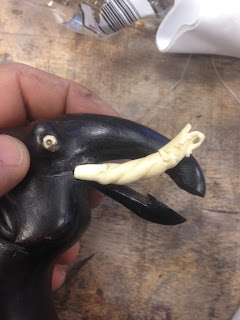Many years ago when I first started in woodworking I would sharpen all my tools with a honing guide. I didn't know how to hollow grind, or even how to lock my wrists to establish a constant angle when honing. I depended on the honing guide so much that I bought several, with the hopes of owning more than one would speed things along. What really occurred was every tool was skewed and every water stone got bellied from the honing guide running over it.
Early on I said to myself I must get rid of these honing guides within six months. My reasoning for wanting to get rid of them was simply due to my mentors never used one so why should I. Well today I am happy to say I can hollow grind my tools with out issue, and I can sharpen free hand. But that all changed once I listened to Deneb Puchalski from Lie-Nielsen tool works. Deneb broke down sharpening like no other person. At first I thought to myself wow this is a great selling pitch, but when a fellow craftsman was constantly questioning, Deneb had a response and great reasoning. Everything that Deneb said made sense so I decided to try the honing guide at the Lie-Nielsen hand tool event.
What I love about the honing guide is the accuracy and ease of use. Its obvious to see quality, but it is a Lie-Nielsen... I am happy to also see that it doesn't take long to get the tools sharp and there is very little concern of dishing of the stones. This is all possible from the Get Sharp Fast system Deneb has developed. Now all my tools won't work with the guide since it is designed for Lie-Nielsen tools, but that said the majority of my tools will work without issue. So there is still a place to master free hand sharpening. Deneb also shared with me his sharpening process and ruler method, when to use it and why to use it. I followed his instructions and I must say what a great honing guide and what a awesome sharpening concept he has developed. I ended up buying the honing guide with the basic small jaws and long jaws, I love it. This will also be great to have on hand for students that are just getting into woodworking. This will allow them to achieve success and not be hindered by all they have to learn.
The sharpening set up that Deneb recommends can be seen in the picture below and its exactly what I am going to make to fit my stones. If you are interested to know more about this process than you can visit
Lie-Nielsen Angle Setting Jig PDF and you also visit Fine Woodworking issue #213. The title of the article is Get Sharp Fast. This is a new and welcoming set up that I am happy to own it and so will my future students/apprentices.



























